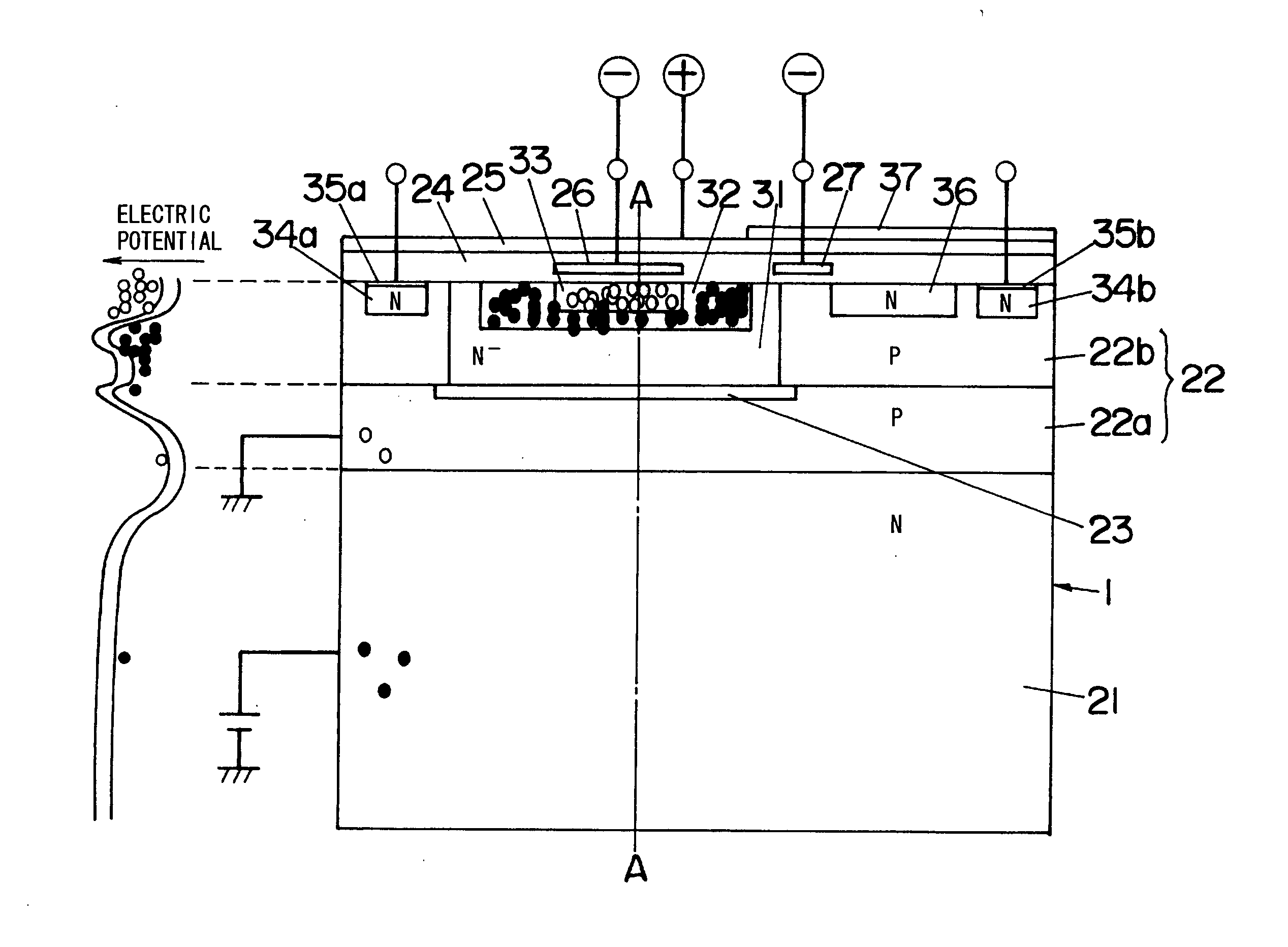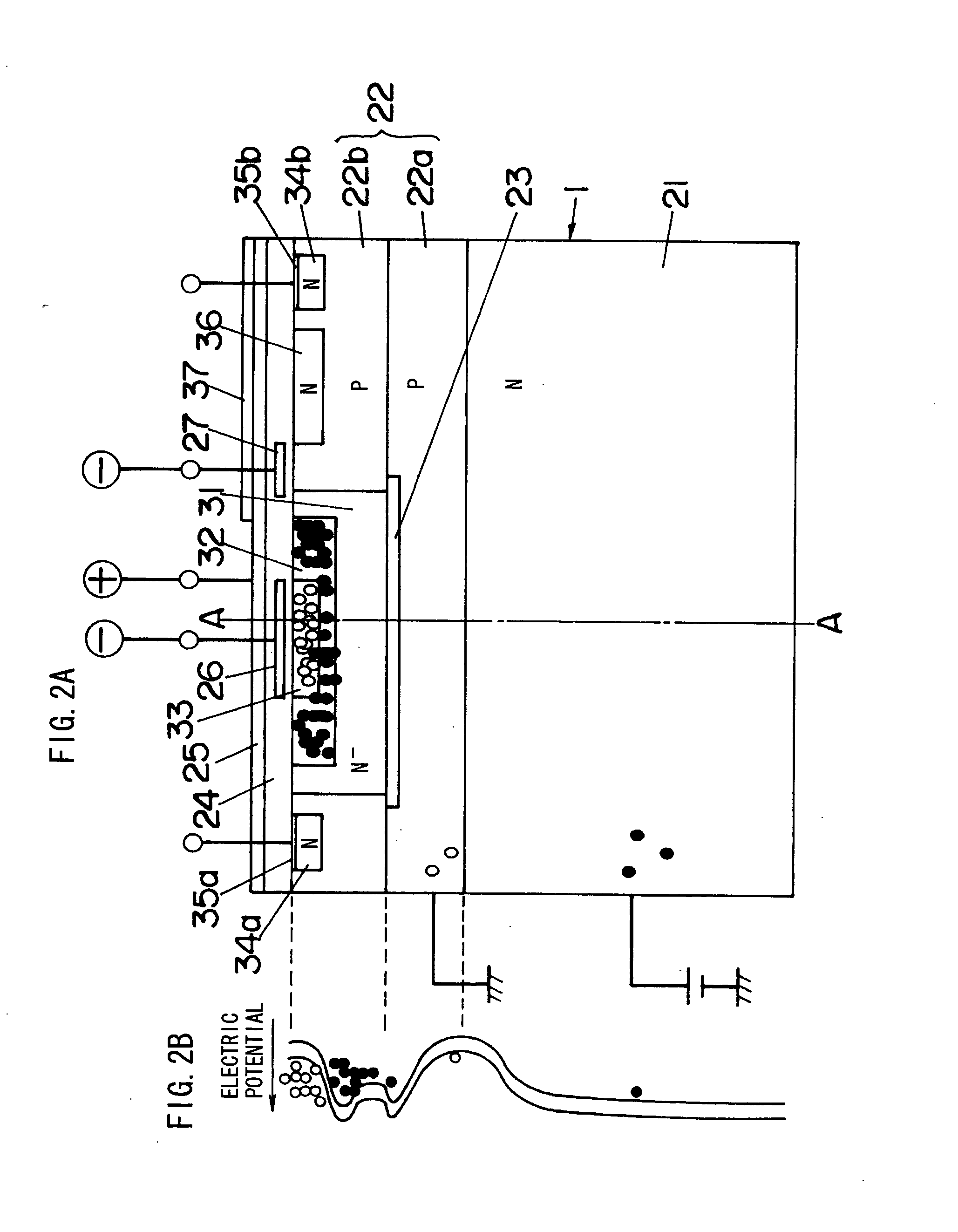Light detecting element and control method of light detecting element
a control method and light detecting technology, applied in the field of light detecting elements, can solve the problems of large output of signal light, inability to distinguish signal light from intermingled light, and limit the quantity of carriers generated according, so as to stimulate recombination mainly, the effect of increasing the probability of recombination
- Summary
- Abstract
- Description
- Claims
- Application Information
AI Technical Summary
Benefits of technology
Problems solved by technology
Method used
Image
Examples
first embodiment
[0054]FIGS. 1-3 show a light detecting element 1 of a first embodiment according to the present invention, and FIG. 4 shows a distance sensor which measures distance by using the light detecting element 1. This sensor is constructed with a light source 2, the light detecting element 1 and a timing control unit 10. The source 2 emits light as output signal light on object space. This object space includes a physical object 3 (distance to be measured) away from the sensor. The element 1 receives light (hereinafter referred to as “input light”) from the object space. The input light includes the light (hereinafter referred to as “input signal light”) from the source 2 reflected by the object 3 depending on the situation. And the sensor obtains output corresponding to the received light from the element 1. The output represents quantity of the input light from the object space.
[0055] In a general way, the above-mentioned distance is measured by calculating light transmission time from a...
second embodiment
[0117] The element 1 of the second embodiment comprises a first photosensitive unit 11a which has suitable structure for picking out the holes and a second photosensitive unit 11b which has suitable structure for picking out the electrons. When the units 11a, 11b are structure of PN junction type or PIN type photodiode, it is possible to realize by reversing conductive type of the semiconductor. Also, in case of the MIS structure, it is possible to realize by reversing conductive type of the semiconductor and setting the electric potential applied to the gates to different polarities.
[0118] The holes generated at the unit 11a are held at the unit 13 through a gate unit 38a, while the electrons generated at the unit 11b are held at the unit 14 through a gate unit 38b. Timing for holding the holes at the unit 13 through the unit 38a is different from that for holding the electrons at the unit 14 through the unit 38b. The unit 10 of the second embodiment controls so as to selectively o...
third embodiment
[0129] In the third embodiment, the extinction period, the light period and the electric potential applied to the electrode 26 are appropriately adjusted, so that the number of the electrons held at the region 31 can be increased before the recombination as compared with the number of the holes held at the region 33. The electrons generated in the extinction period are not disposed of, but recombination can be stimulated between the electrons generated in the light period and the holes of which the number is equal or greater than that of the electrons generated in the extinction period, while the number of the electrons on the recombination can be greater than that of the holes. In short, it is possible eliminate the components of the ambient light while making the electrons remain after the recombination. FIG. 10 shows a state that the electrons and holes are respectively held at the regions 31 and 33 after the extinction period and the light period as described above.
[0130] In the...
PUM
 Login to View More
Login to View More Abstract
Description
Claims
Application Information
 Login to View More
Login to View More - R&D
- Intellectual Property
- Life Sciences
- Materials
- Tech Scout
- Unparalleled Data Quality
- Higher Quality Content
- 60% Fewer Hallucinations
Browse by: Latest US Patents, China's latest patents, Technical Efficacy Thesaurus, Application Domain, Technology Topic, Popular Technical Reports.
© 2025 PatSnap. All rights reserved.Legal|Privacy policy|Modern Slavery Act Transparency Statement|Sitemap|About US| Contact US: help@patsnap.com



